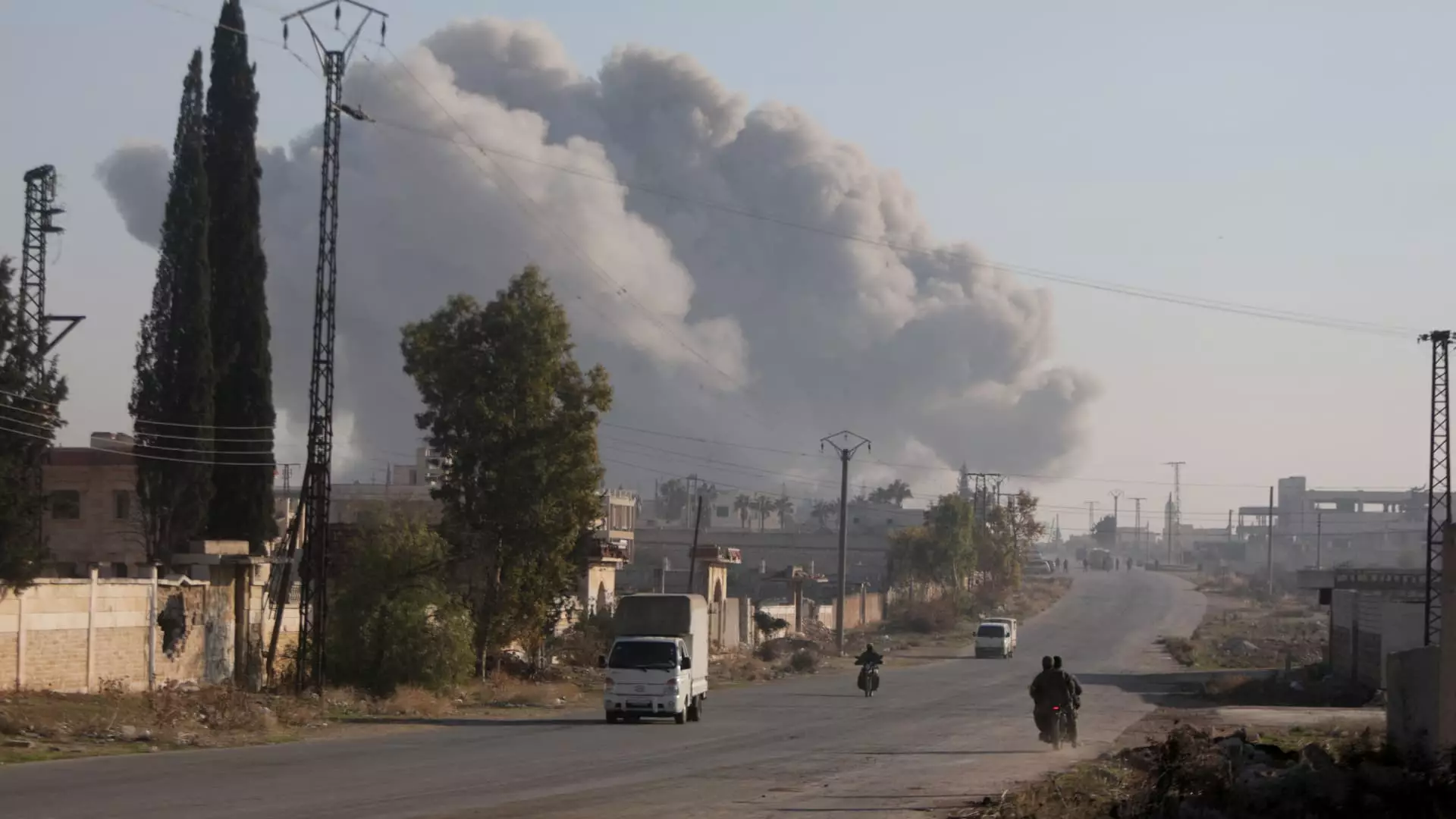Aleppo, once Syria’s bustling commercial hub, finds itself once again embroiled in conflict, marking the first significant clash between insurgents and government forces since 2016. This resurgence of violence has reverberated through the region, which is already grappling with the repercussions of concurrent conflicts across the Middle East, particularly in Gaza and Lebanon. Witnesses report that residents near the frontline scrambled to escape the chaos; this sudden upheaval not only highlights the fragility of the ceasefire agreements in place but also raises concerns about the broader implications for regional stability.
The Syrian Observatory for Human Rights has documented an alarming rise in casualties on both sides of the conflict, as armed groups gain ground in the outskirts of Aleppo. The conflict’s recent escalation is bolstered by a coordinated offensive that saw various factions conducting surprise attacks across northwestern Syria. Reports suggest that the clashing groups included the prominent Islamist faction, Hayat Tahrir al-Sham (HTS), who have signaled their readiness for an offensive for some time. The speed and scale of their advance on Aleppo were unexpected and have revealed the vulnerabilities present within government forces.
Critics of the Syrian government are keen to point to the apparent weakening of the regime’s military capabilities, with some analysts asserting that the recent clashes underscore a substantial decline in government control over territory. Robert Ford, the former U.S. ambassador to Syria, characterized this bold offensive as indicative of governmental weakness, suggesting that regular forces appeared to retreat in a rout-like fashion. This assessment aligns with observations that Iran-aligned groups, such as Hezbollah, have been diverted to focus on their battles in Lebanon, leaving Assad’s regime without crucial support.
The implications of this shift are profound, especially against a backdrop of ongoing geopolitical tensions. As the Iranian military focuses its efforts elsewhere, particularly in confrontations with Israel, the Syrian government faces an increasingly untenable situation, prompting speculation about the potential for further fragmentation within its ranks. Dareen Khalifa, a senior adviser with the International Crisis Group, aptly noted that the regime’s quick collapse in the face of insurgent advances was unexpected, hinting at a broader, systemic crisis within the Assad government itself.
The international community watches this intensifying conflict with heightened concern. The Russian government, a key ally of the Syrian regime, has labeled the insurgent attacks a breach of Syrian sovereignty. Moscow’s position reflects both ideological commitments and practical concerns about maintaining influence in the region. As government forces confront the insurgents, they assert that they have engaged and dismantled various insurgent logistics, aggressively pushing back against what they characterize as misinformation about their military capabilities.
Concurrently, Turkey’s involvement adds an additional layer of complexity. Long a supporter of opposition factions in Syria, Turkey’s failed diplomatic efforts to preempt government attacks illustrate the ineffective management of the intertwined conflicts and the precarious balance of power. Reports indicate that Turkish-backed groups initiated a limited offensive focused on Aleppo, which expanded rapidly amid an apparent retreat by Syrian government forces.
The ramifications of this new chapter of conflict stretch beyond immediate violence. As the fragile ceasefire established in 2019 erodes, concerns about humanitarian implications rise sharply. Civilians have already begun to bear the brunt of hostilities, with reports of missile strikes targeting populated areas leading to casualties, including university students in Aleppo. The potential for further loss of civilian life beckons ominously, coinciding with an urgent need for renewed diplomatic engagement to stabilize the region.
With anti-government factions now reportedly controlling key strategic locations, including Saraqeb, the situation is precariously aligned. These territorial gains allow insurgent forces to disrupt logistics between major Syrian cities such as Aleppo and Damascus, presenting a considerable challenge to the restricted operations of government forces. The ongoing wrestling for control over these territories underscores the increasingly fragmented nature of the conflict, which could well spiral further into chaos.
As the situation in Aleppo continues to evolve, the intertwined nature of regional conflicts reveals a concerning trend of instability that poses serious risks not only for Syria but for the broader region as well. With insurgents seizing momentum and the government appearing beleaguered, the future landscape of Syrian warfare will likely see continued volatility. This current reality serves as a stark reminder of the responsibilities needed from the international community to foster meaningful dialogue and lasting solutions to the enduring crisis in Syria.

Leave a Reply